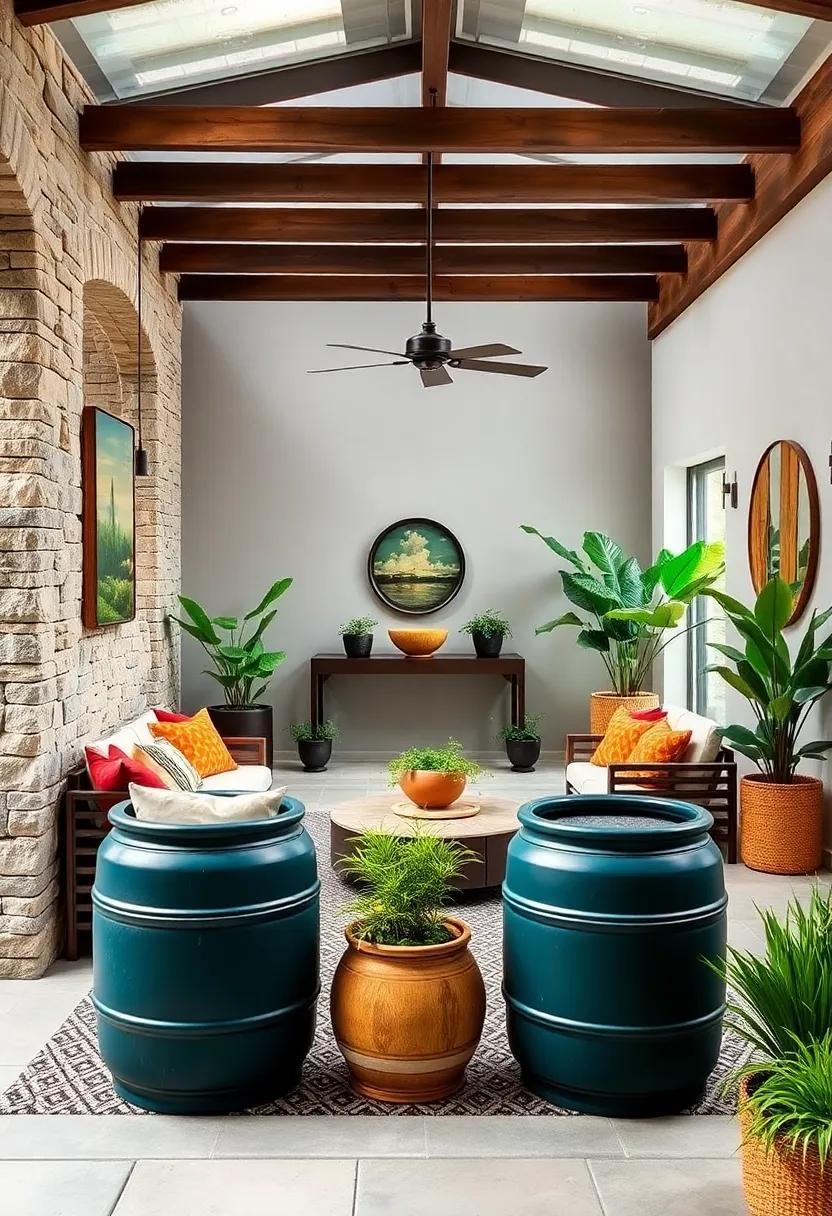As the world becomes increasingly aware of the importance of sustainability, our outdoor spaces offer a unique canvas for creativity and environmental responsibility. One of the most effective ways to cultivate a more green-friendly garden while conserving precious water is through the use of rain barrels. These simple yet impactful tools not only help you gather and store rainwater for future use but also reduce runoff and promote a healthier ecosystem.
In this listicle, we’ve compiled 25 inspiring ways to integrate rain barrels into your outdoor environment. From innovative designs that blend seamlessly into your landscape to practical tips on how to maximize your water collection, each entry is crafted to inspire both seasoned gardeners and newcomers alike. Whether you’re looking to create a thriving vegetable patch, maintain a vibrant flower garden, or simply enhance your yard’s sustainability, you’ll find valuable insights and actionable ideas that will empower you to transform your outdoor spaces. Prepare to delve into a world of creativity and eco-conscious living that not only benefits you but also preserves our planet for generations to come!
Transforming Rainwater into a Resource: Understanding the Basics of Rain Barrels
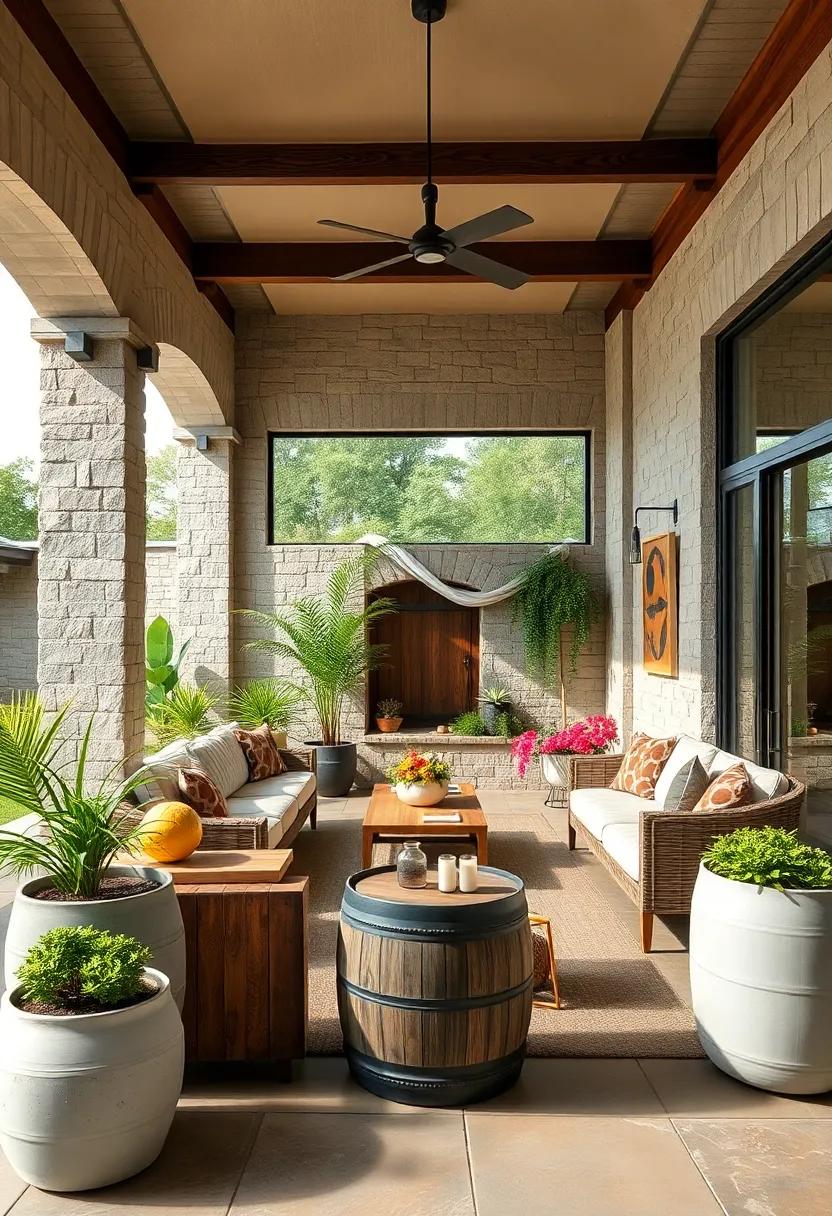
Understanding how to transform rainwater into a valuable resource starts wiht the basics of rain barrels. These systems are designed to collect runoff from roofs,channeling it directly into a storage container.When selecting a rain barrel, consider materials that are both durable and eco-friendly—such as food-grade plastic or repurposed wood. Setup is crucial; place the barrel underneath a downspout and elevate it to ensure easy access to the spigot. Don’t forget to incorporate a closed lid to prevent mosquito breeding and debris from entering the water supply,and install a first flush diverter to improve water quality by diverting the initial stormwater runoff,which often contains contaminants.
Once installed, rain barrels can be used for various purposes beyond simple garden watering. Here are some creative ways to maximize their potential:
- Drip irrigation: Connect your rain barrel to a drip irrigation system to provide consistent moisture to your plants.
- Rain Gardens: Use runoff from your barrel to establish a rain garden that enhances biodiversity and beauty.
- Water Features: Utilize rainwater to fill ponds or fountains that promote a serene outdoor ambiance.
- Outdoor Cleaning: Harvest water for washing outdoor furniture or cleaning decks without taxing municipal water supplies.
Choosing the Right Location: Strategic Placement for Optimal Water Collection
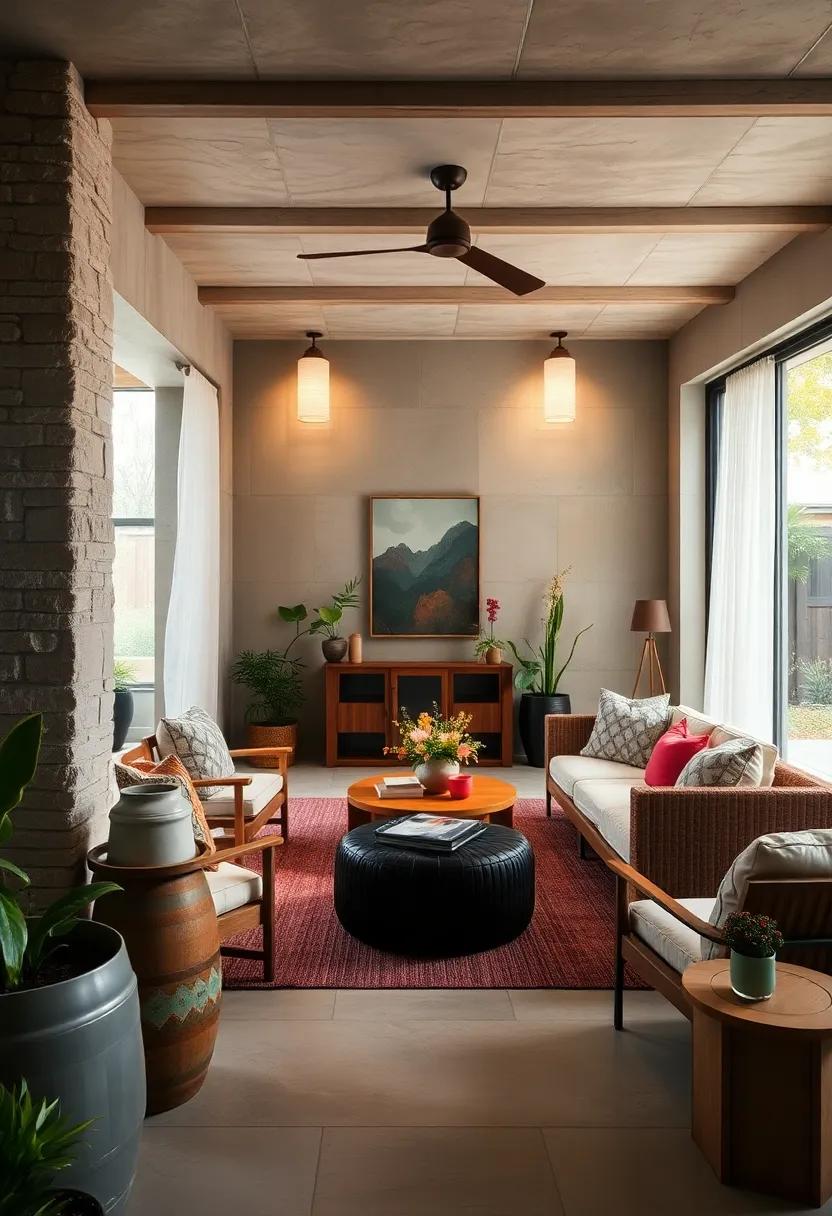
Choosing the best spot for your rain barrel is crucial for maximizing water collection efficiency. Ideally, rain barrels should be positioned under a downspout to catch runoff directly from your roof. Consider the following factors to enhance accessibility and usability:
- Proximity to Gardens: Position your rain barrel close to your flower or vegetable gardens to make watering straightforward and reduce hose drag.
- Sunlight Exposure: Place the barrel where it receives some sunlight to keep the water warm, which is better for plants; however, avoid too much sunlight that can promote algae growth.
- Accessibility: Ensure the barrel is easily reachable for filling watering cans or connecting hoses.
Additionally, the landscape itself plays an essential role in rainwater harvesting. Evaluate the natural gradient of your yard to determine optimal placement that benefits from gravity and maximizes runoff. When assessing your location, consider these elements:
| Factor | Ideal Conditions |
|---|---|
| Ground Slope | Choose areas with a downward slope to direct water flow towards the barrel. |
| Surrounding Vegetation | Avoid dense foliage that may obstruct rain collection or introduce debris. |
| Soil Type | Opt for solid, well-draining soil to prevent pooling around the base of the barrel. |
DIY Rain Barrel Designs: Creative Ways to Build Your Own
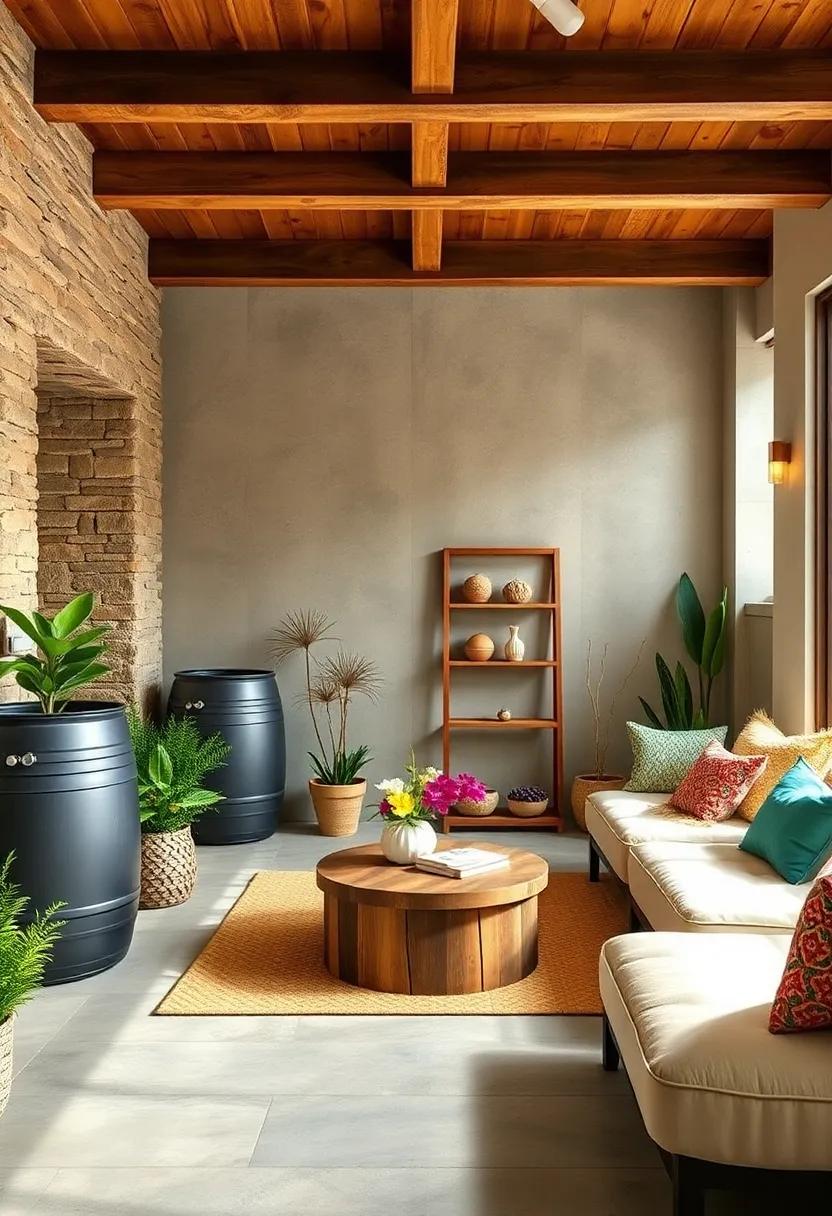
Transforming a simple rain barrel into a functional and artistic element of your garden can be an enjoyable DIY project. Consider using repurposed materials to create a rain barrel that not only conserves water but also showcases your creativity. Options like wooden wine barrels, old industrial drums, or ceramic pots can bring unique aesthetics to your outdoor space. For a rustic look, add a protective coating to a wooden barrel and place it near your garden shed or patio. Alternatively, for a modern vibe, you can paint an industrial drum in vibrant colors or even use stencils to create eye-catching designs.
Another innovative approach is to integrate your rain barrel with planters or garden beds, allowing for a seamless flow of water from the barrel into the plants. here are a few design ideas to inspire you:
- Barrel Planter Combo: Create a tiered system where a rain barrel sits above a series of connected planters, allowing gravity to direct water to your flowers and herbs.
- Potted Rain Barrel: Set a rain barrel inside a large, decorative pot filled with trailing vines that spill over the edges, turning your water storage into a living sculpture.
- Wall-mounted Design: Fix a narrow rain barrel against a wall, complete with a tap for easy access, and surround it with vertical planters for an efficient use of space.
| Design Type | Materials Needed | Unique Feature |
|---|---|---|
| Wooden Wine Barrel | Wine barrel, sealant, spigot | Natural wood aesthetic |
| Ceramic Pot | Ceramic pot, waterproof liner, drainage | Colorful and decorative |
| Vertical Planter Barrel | Rain barrel, planter boxes, hose | Space-saving design |
Enhancing Aesthetics: How to Decorate Your Rain Barrel
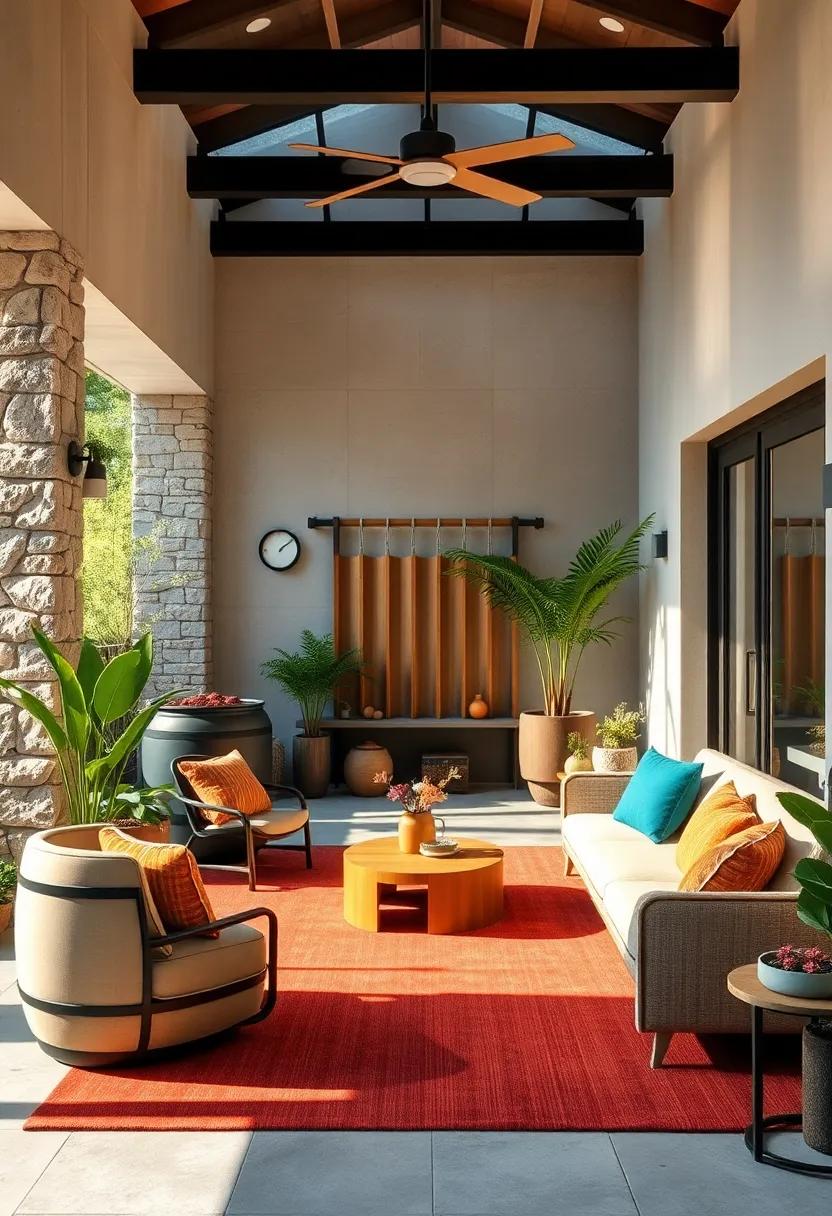
Connecting to Gutters: A Step-by-Step Guide for Beginners

Connecting your rain barrel to your gutters is a straightforward process that can considerably enhance your garden’s sustainability.To begin, gather the necessary tools and materials: a rain barrel, compatible connectors, a drill, a saw, and some waterproof sealant.First, select a location for your rain barrel that is both accessible and close to your downspout. You can elevate the barrel on bricks or a platform to allow gravity to assist with water flow. Next, measure the downspout and cut it accordingly; make sure to leave enough height to direct the flow into the barrel without obstruction. Remember to keep the cut edges smooth to prevent injury.
Now, attach a diverter or a flexible hose from the cut-downspout to the rain barrel’s intake.Diverters can be particularly effective as they allow for easy water flow management. After securing the connection, apply waterproof sealant around the joints to prevent leaks.To ensure that your rainwater collection is efficient, be sure to install a screen over the barrel’s opening to keep out debris and mosquitoes. If you’d like to take it a step further, consider adding a spigot at the bottom of the barrel to make accessing your harvested water more convenient. With these steps, you’ll have a functional rain barrel ready to collect precious rainwater for your garden!
Installing a Diverter: Seamlessly Incorporating Rain Barrels into Your System
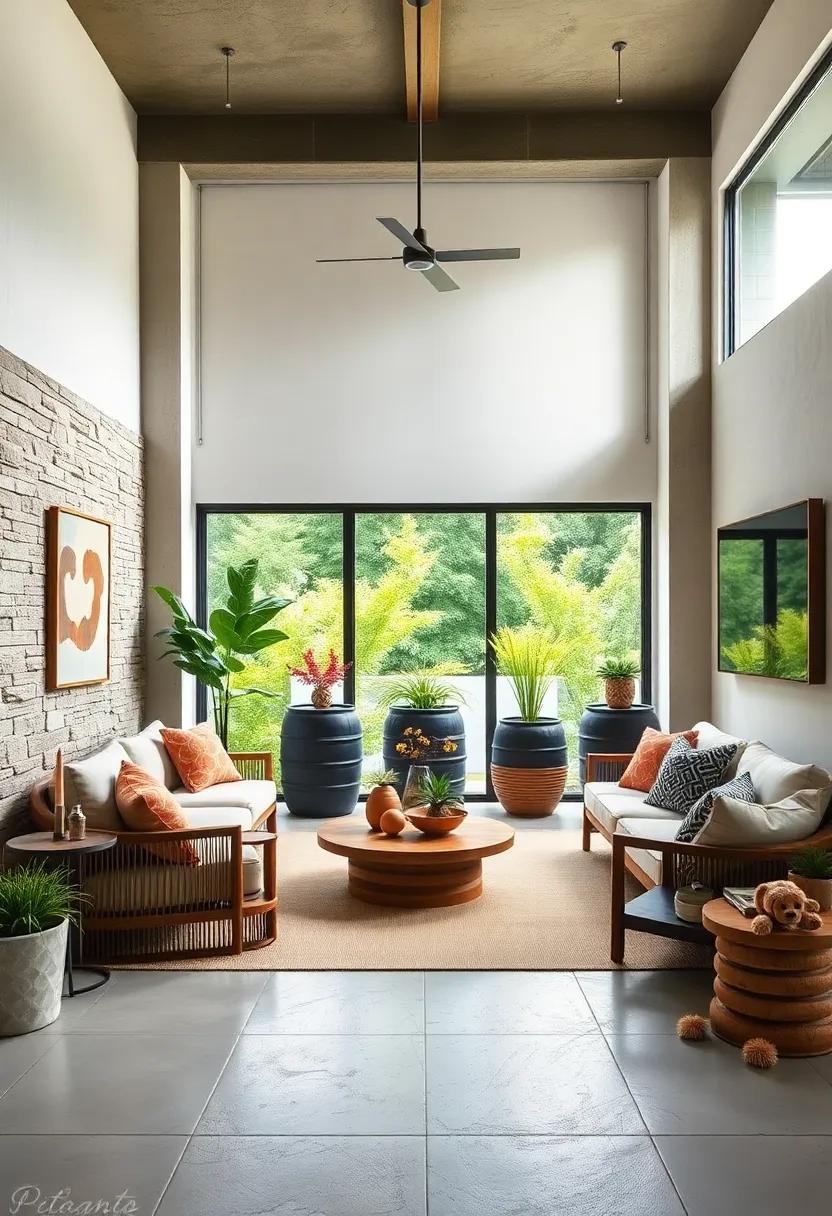
Incorporating a diverter into your rain harvesting system can transform the way you utilize rainwater,providing an efficient and sustainable solution for your outdoor spaces. To achieve a seamless integration, consider the following essential steps:
- Select the Right Diverter: Choose a diverter that matches the size of your downspout and is compatible with your rain barrel. Options include simple flip-type diverters or more sophisticated ones with additional features like built-in overflow protection.
- Cut the Downspout: Using a saw, carefully cut the downspout where the diverter will be installed. take precautions to ensure a straight cut for a snug fit.
- Install the Diverter: Fit the diverter into the downspout, ensuring a tight seal to prevent leaks. Secure it with screws if necessary, following the manufacturer’s instructions.
- Connect to the rain Barrel: Attach a hose or pipe from the diverter to the rain barrel, making sure the connection is watertight.
- Check for Proper Function: Once installed, test the system by simulating rainfall. Observe the flow of water to ensure that it’s being directed into the barrel without any backup.
A well-installed diverter not only helps in effective rainwater collection but also minimizes the risks of overflow and water pooling around your home. To further enhance your rainwater harvesting setup, consider these additional tips:
| Tip | Description |
|---|---|
| Positioning | Place your rain barrel in a location that allows for easy access and maximizes sunlight exposure for warming the water. |
| Maintenance | Regularly clean the diverter and downspouts to prevent clogs and ensure optimal water flow. |
| Overflows | Install an overflow valve on your barrel to redirect excess water back to your garden or drainage system. |
Educating Others: Hosting a Workshop on Rain Barrel Benefits
Organizing a workshop is a fantastic way to spread awareness about the benefits of rain barrels while engaging your community in sustainability practices. By creating an interactive environment, participants will have the opportunity to learn through hands-on experiences and discussions. Consider incorporating the following elements into your workshop to make it both informative and enjoyable:
- basic Principles of water Conservation: Teach participants how rain barrels collect and store runoff, helping to conserve water for gardens and landscapes.
- DIY Rain barrel Construction: Guide attendees through step-by-step demonstrations on how to create their own rain barrels using recyclable materials.
- Incorporating Rain Barrels in Landscaping: Discuss how rain barrels can be integrated into various landscaping designs to enhance both aesthetics and functionality.
- Local Ecosystem Benefits: Explain how using rain barrels reduces stormwater runoff and fosters healthier ecosystems.
To enhance the educational experience,create an engaging visual display that highlights the key benefits of rain barrels. Utilize tables to present data clearly and concisely. For instance, a simple table can list the environmental impacts of traditional watering methods versus rain barrel usage:
| Watering Method | monthly Water Usage (Gallons) | Rain Barrel Savings (%) |
|---|---|---|
| Traditional Hoses | 800 | 30% |
| Rain Barrels | 560 | – |
Encouraging participants to take action during the workshop can leave them feeling empowered. providing resources such as handouts with local rainwater harvesting regulations and a list of materials they can use to build their own rain barrels reinforces their learning. ultimately, your workshop could spark a movement towards sustainability in your community, inspiring others to adopt eco-friendly practices.
creating a Rain Garden: Using Collected water for native Plantings
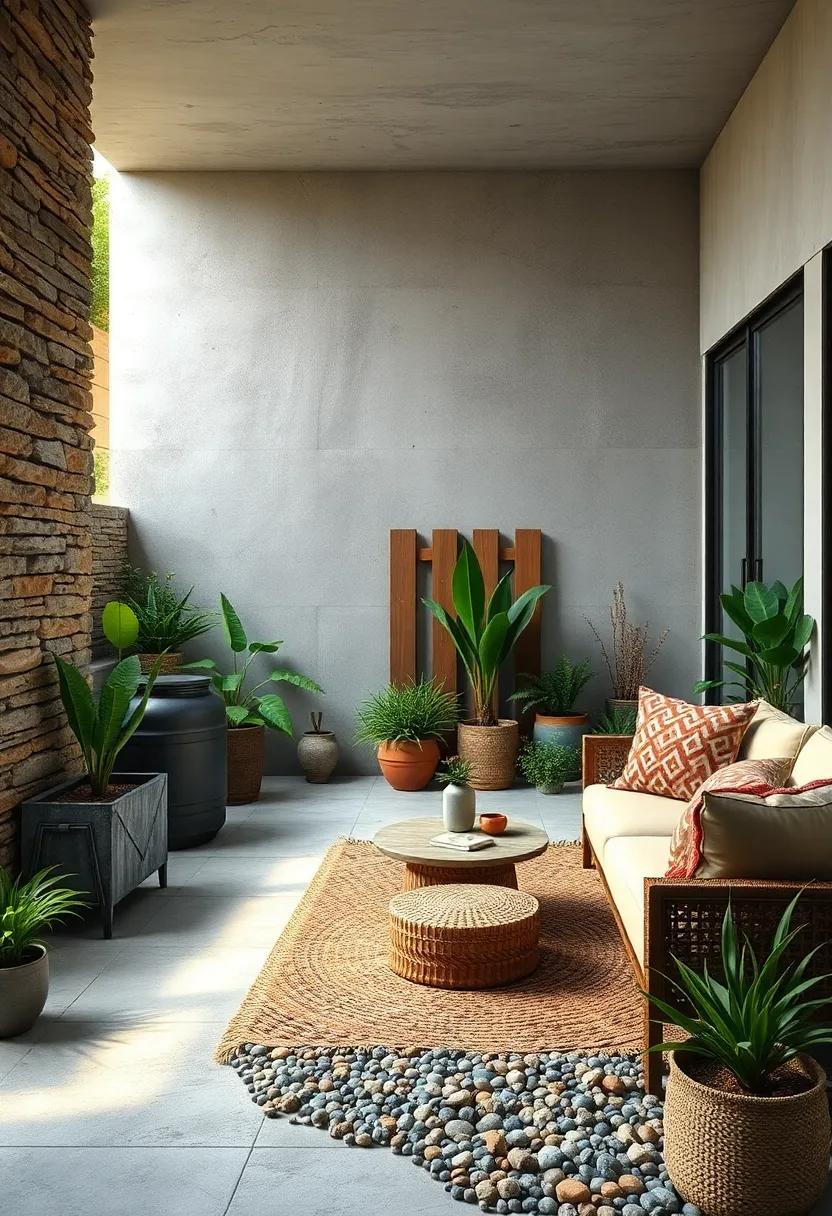
Transforming your landscape into a vibrant rain garden is an eco-friendly way to utilize collected rainwater while supporting local biodiversity. By redirecting the runoff collected in your rain barrels to a designated area filled with native plants, you can create a beautiful and functional space that not only attracts pollinators but also mitigates stormwater pollution. Focus on incorporating a mix of grasses, wildflowers, and shrubs tailored to your region’s climate conditions. Native plants are well adapted to local soils and require less maintenance, making your garden more sustainable over time.
To optimize your rain garden’s effectiveness, consider the following tips:
- Location: Choose a spot that can handle excess water without causing erosion.
- Layering: Utilize a diversity of plant heights to create visual interest and support various wildlife.
- Soil Preparation: Amend the soil with compost to promote healthy root growth and water absorption.
- Maintenance: Regularly remove weeds and check for standing water to ensure your garden thrives.
| Plant Type | Water Requirements | Height |
|---|---|---|
| Coneflower | Moderate | 24-36 inches |
| Black-eyed Susan | Low | 18-24 inches |
| swamp Milkweed | High | 36-48 inches |
| Switchgrass | Low | 36-60 inches |
Companion Planting: Pairing Plants that Thrive with Rainwater Irrigation

Companion planting is a sustainable gardening practice that can significantly enhance plant growth,especially when using rainwater irrigation. By strategically pairing plants that benefit each other, you create a harmonious ecosystem that maximizes water efficiency.For instance, consider the combination of tomatoes and basil. This duo not only helps deter pests but also encourages healthier growth, making them ideal partners in a rain-fed garden. Similarly,carrots and onions are known to improve each other’s flavor and health while ensuring that both plants efficiently utilize rainwater through complementary root systems.
When selecting plant companions, it’s essential to consider their water needs and growth habits. For example, squash and corn can thrive together, as the tall corn provides shade for the sprawling squash plants, reducing evaporation rates and retaining moisture. Another effective pairing is beans and corn, where beans naturally fix nitrogen in the soil, improving nutrient availability for thirsty corn. Below is a simple table that summarizes some excellent companion planting combinations that flourish with the help of rainwater irrigation:
| Plant Pairing | Benefits |
|---|---|
| Tomatoes & Basil | Repel pests & enhance flavor |
| Carrots & Onions | flavor enhancement & pest deterrence |
| Squash & Corn | moisture retention & shade provision |
| Beans & Corn | Nitrogen fixation & support structure |
Drip Irrigation Systems: Efficiently Using Rainwater in Your Garden
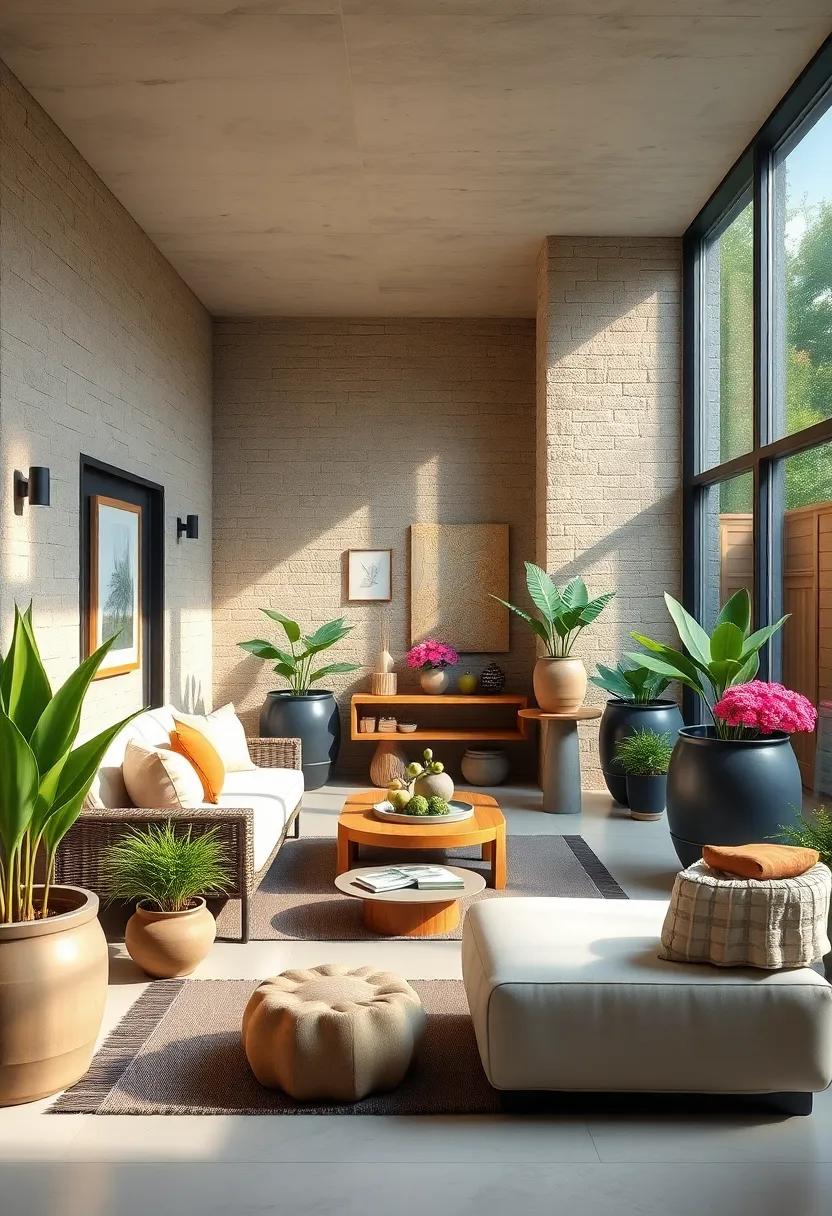
One of the most effective methods of utilizing rainwater in your garden is through the implementation of drip irrigation systems. These systems deliver water directly to the roots of your plants, minimizing waste and maximizing efficiency.By connecting your rain barrels to a drip irrigation setup, you harness the power of nature while ensuring that each drop counts. Consider the following benefits:
- Water Conservation: Reduces evaporation and runoff.
- Targeted Irrigation: Delivers water directly where it’s needed.
- Reduced Diseases: keeps foliage dry, minimizing fungal issues.
- time Savings: Automates watering schedules with a timer.
- Soil health: Maintains consistent moisture levels in the soil.
To set up a drip irrigation system using harvested rainwater, you’ll need to consider a few essential components. This includes drip tubing, a filter to prevent clogging, and emitters to control the flow rate. Customizing the layout to fit your garden’s specific needs ensures optimal performance. Here’s a simple table outlining the components and their purposes:
| Component | Purpose |
|---|---|
| Drip Tubing | Transports water throughout the garden. |
| Filter | Prevents debris from clogging the system. |
| Emitters | controls the water flow rate to each plant. |
| Timer | Automates watering according to a schedule. |
Wildlife benefits: Supporting Birds and Bees with Sustainable Practices
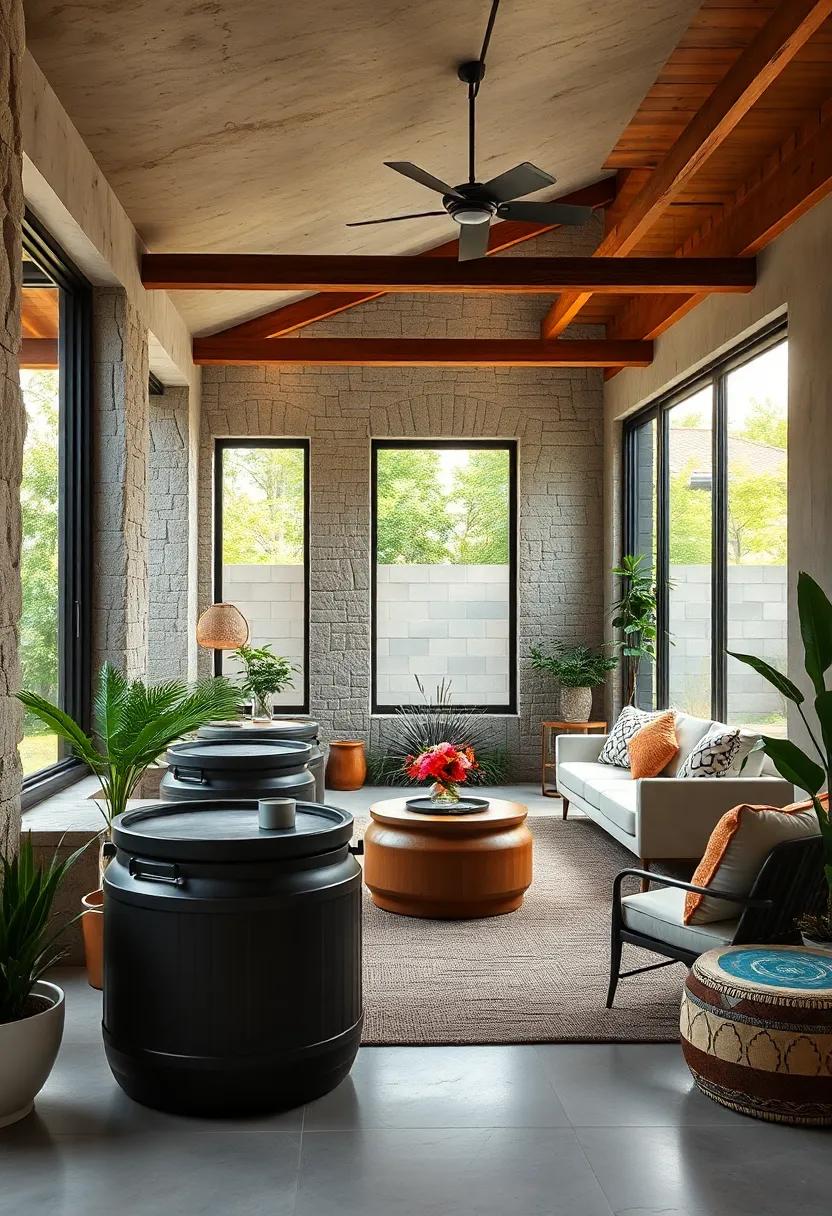
Creating a sustainable outdoor space not only enhances your garden but also plays a vital role in supporting local wildlife, particularly birds and bees.By integrating features that attract these species, you nurture biodiversity and help maintain ecological balance. One effective way to promote a thriving environment is by incorporating a variety of native plants that offer food and shelter.Consider adding shrubs and flowers that produce nectar, seeds, and berries to cater to different bird and bee species. Additionally,installing birdhouses and bee hotels can provide safe havens for nesting and breeding,helping to bolster their populations.
Using rain barrels can further enhance your commitment to wildlife by creating a sustainable water source for your garden. By redirecting rainwater to these barrels, you’re not only conserving resources but also ensuring that your plants remain lush and inviting to pollinators. when you water your garden with this collected rainwater,it creates a healthy habitat that attracts birds and bees alike. To maximize this benefit, you can implement practices like:
- Choosing native plants that bloom at different times to provide year-round food.
- Creating diverse layers in your garden with tall plants, mid-sized shrubs, and ground cover.
- Implementing a compost bin to enrich the soil naturally, promoting healthy plant growth.
Composting with Nature: Using Rainwater to Create Healthy Compost

Integrating rainwater into your composting process can significantly enhance the quality of your compost and contribute to a healthier garden ecosystem. By collecting rainwater through barrels, you can provide a natural moisture source that helps decompose organic matter efficiently. This method not only conserves water but also enriches the compost with essential nutrients found in the rain,making it an excellent alternative to tap water. Consider the following tips to make the most of your rainwater in composting:
- Maintain Balance: Ensure that your compost pile has the right balance of greens (nitrogen-rich materials) and browns (carbon-rich materials). Rainwater helps keep the pile moist without making it too soggy.
- Timed watering: Water your compost pile with rainwater during dry spells to keep it active. This promotes the breakdown of materials and prevents odor.
- Use Mulch: Layering your compost with rain-soaked mulch can further retain moisture and help integrate the rainwater into the pile.
Monitoring the moisture content of your compost is crucial, and rainwater can naturally aid in achieving optimal conditions.To gauge the moisture level, you might use a simple table to track the effects of rainwater over time on your compost pile’s health and activity:
| Day | Rainwater Added (Liters) | Temperature (°C) | Moisture Level |
|---|---|---|---|
| 1 | 2 | 35 | High |
| 7 | 3 | 30 | Medium |
| 14 | 0 | 32 | Low |
By consistently using rainwater and tracking it’s impact, you can cultivate a thriving compost that not only enriches your garden but also exemplifies sustainability. Ultimately, this practice reinforces the symbiotic relationship between your outdoor spaces and the environment, encouraging a mindful approach to gardening.
Seasonal Setup: Preparing Your Rain Barrel for winter and Spring
As the seasons shift, it’s important to ensure your rain barrel is ready for both winter’s chill and spring’s rejuvenation. Winterizing your barrel prevents damage from freezing temperatures and keeps it in prime condition for the next watering season. Start by emptying the barrel completely and cleaning it with a mixture of water and vinegar to eliminate any algae or bacteria. Once your barrel is spotless, consider covering it with a breathable fabric to protect it from debris while still allowing for airflow. If possible, disconnect and store the downspout that feeds into the barrel, ensuring that all water is diverted away from your winter shelter.
As spring approaches, it’s time to revitalize your rain barrel for the upcoming rainy months. Reattach the downspout and inspect for any leaks that might have developed during the colder months. Fill the barrel with water from your garden hose or an outdoor faucet to check the flow rate through your spigot or connected drip irrigation system. This is also the perfect time to consider a rain barrel maintenance schedule that includes regular cleanings and checks preemptively before seasonal storms. Remember to place your rain barrel in a location that promotes easy access for water collection, helping your garden thrive with sustainable watering practices.
Collecting and Filtering Rainwater: Essential Tips for Clean Water Use
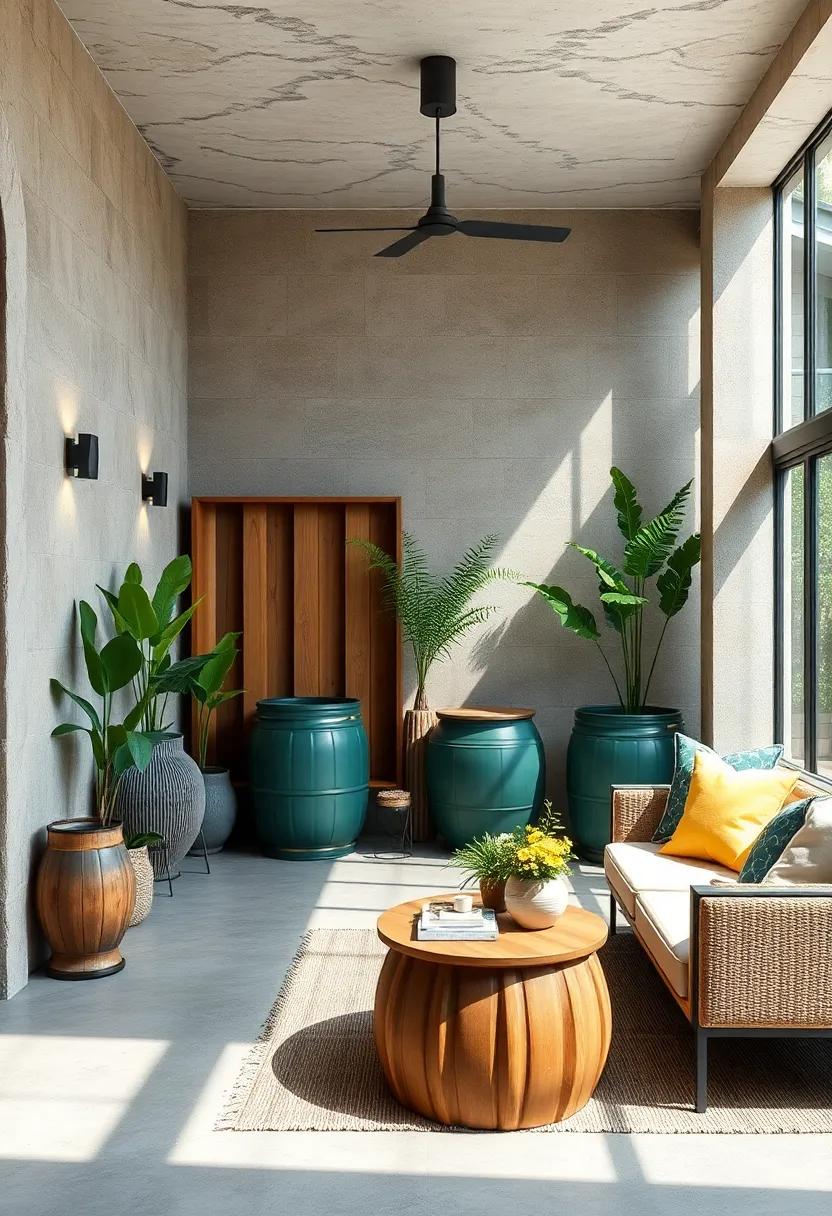
Collecting rainwater can significantly reduce your water bill and support eco-friendly gardening practices. To ensure that your harvested water remains clean and safe for use,follow these essential tips:
- Choose the Right Collection System: Opt for a high-quality rain barrel with a secure lid to prevent contaminants from entering. Consider models with screens to keep out debris and insects.
- Regular Maintenance: Clean your barrels and gutters at least twice a year to remove any leaf build-up and sediment. This practice not only prolongs the life of your system but also ensures better quality water.
- Test Water Quality: Periodically check the water for impurities by sampling it before use in gardening or landscaping. Simple water test kits can determine pH levels and contaminant presence.
In addition to maintenance, effective filtering techniques can enhance the quality of collected rainwater. Implement these strategies in your system for optimal results:
- First Flush Diverters: Install a diverter that allows the initial runoff (which may contain roof contaminants) to be discarded before collecting clean water.
- Sand and Gravel Filtration: Use layers of sand and gravel in your rain barrel to gradually filter out larger particles and sediments as water enters.
- Activated Charcoal Filters: Incorporating activated charcoal can help remove odors and enhance the taste of the stored rainwater, making it better suited for household use.
Community Projects: Collaborating to set Up Rain Barrels in Local Parks
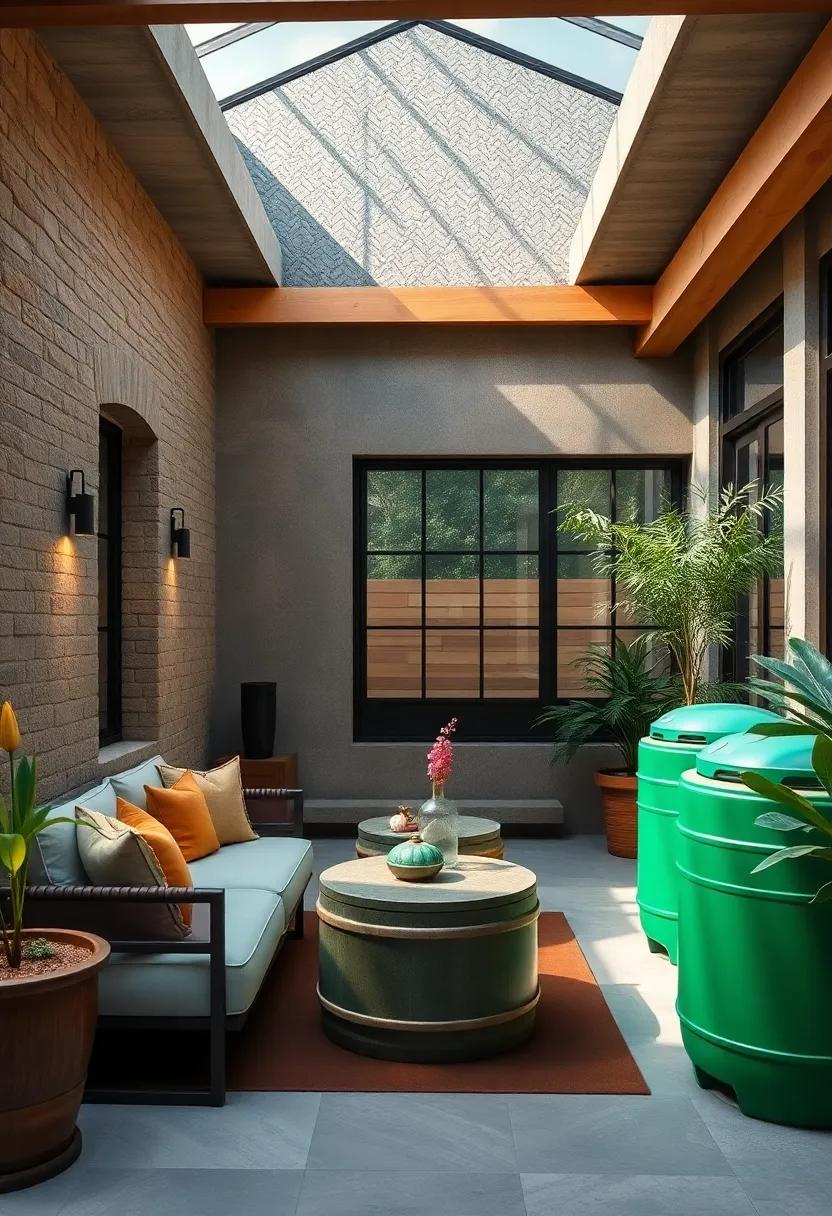
Transforming local parks into green havens is not only beneficial for our environment, but it also fosters a sense of community. By collaborating on projects to set up rain barrels, residents can work together to harness rainwater, which can then be used to irrigate gardens, flowerbeds, and recreational areas. Establishing rain barrels in parks encourages sustainable practices and serves as a hands-on educational tool for children and adults alike, highlighting the importance of water conservation. Besides collecting rainwater, these barrels can also be beautifully decorated by local artists, adding an aesthetic value to the park while encouraging more people to engage with their surroundings.
Involving community members in the planning and implementation of these rain barrel installations can lead to stronger ties among residents and a deeper thankfulness for nature. Consider organizing workshops where participants can learn about the benefits of rainwater harvesting and the steps required to set up their own rain barrels at home. you might also create volunteer days that focus on painting and personalizing the barrels, allowing families to bond over creativity and sustainability. Here are some suggestions for such impactful projects:
- Community Workshops: Teach people how to install and maintain rain barrels.
- Art in the Park: Host painting events where locals can customize their rain barrels.
- Rain Garden Integration: Design gardens that work harmoniously with the rain barrels for enhanced water management.
- Educational Signage: Install informative signs near the barrels to explain their purpose and benefits.
Educational Programs: Partnering with Schools to Teach Water Conservation
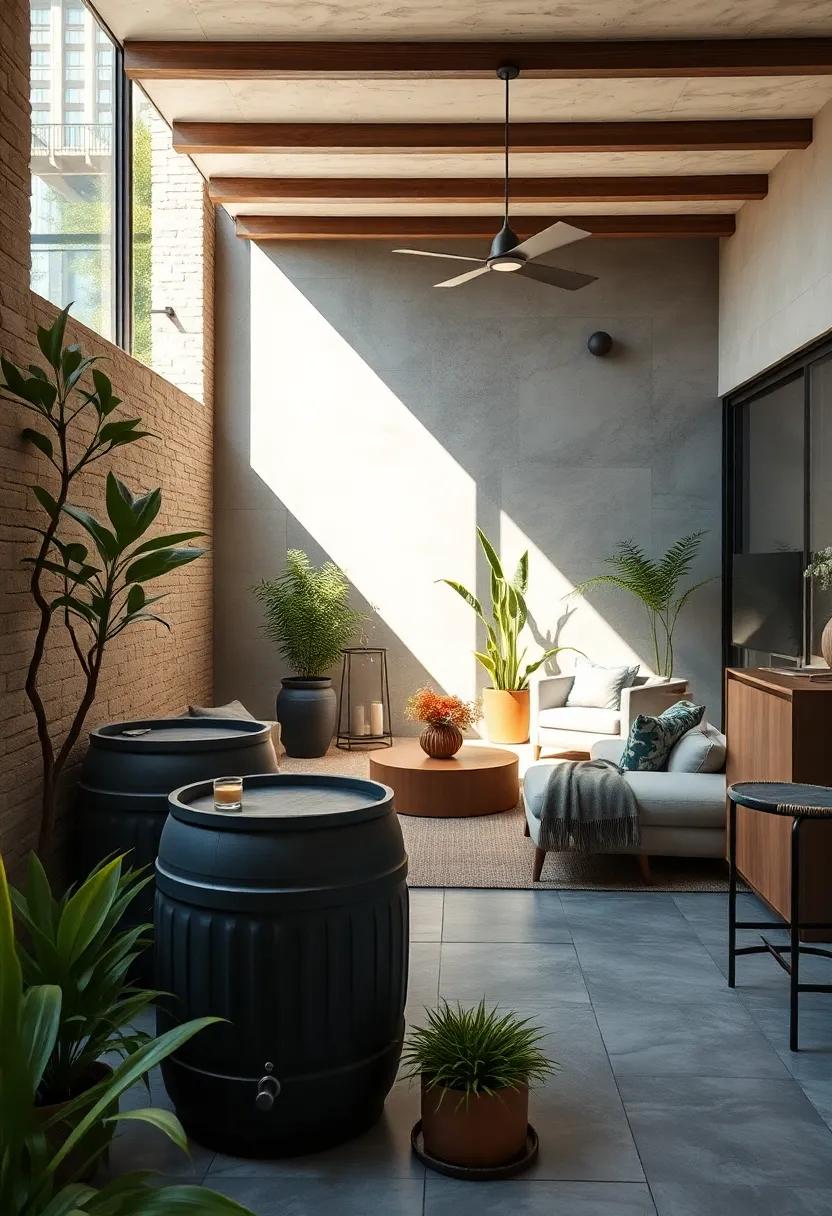
Engaging with local schools offers a fantastic opportunity to educate young minds about the importance of water conservation through interactive and hands-on programs. Schools can implement workshops that focus on how rain barrels work and their role in creating sustainable ecosystems. by partnering with community organizations, they can provide students with the chance to build their own rain barrel systems, illustrating the impact of capturing rainwater for gardening and other uses. To enhance the learning experience, consider organizing field trips to local parks or community gardens that utilize rain barrels, allowing students to witness the benefits firsthand.
Incorporating water conservation into the curriculum can further enrich student learning. Schools can integrate exciting science projects that encourage students to track rainwater usage or design innovative water-efficient gardens. Alongside these initiatives, educational materials like brochures, posters, and digital resources can be distributed to disseminate valuable information. A collaborative effort with local businesses can also result in fundraising efforts to support the installation of rain barrels at schools, creating a sense of ownership and responsibility among students. Here’s a simple table showcasing various program ideas:
| program Idea | Description |
|---|---|
| Workshop on Rain Barrels | Hands-on sessions teaching students how to build and maintain rain barrels. |
| Field trip | Visit to a local garden that uses rain barrels and learn about sustainable practices. |
| Science Projects | Encourage students to research and present on water conservation topics. |
| Fundraising Activities | Organize events to raise funds for installing rain barrels at schools. |
leveraging Technology: Smart Rain Barrels for Modern Gardens
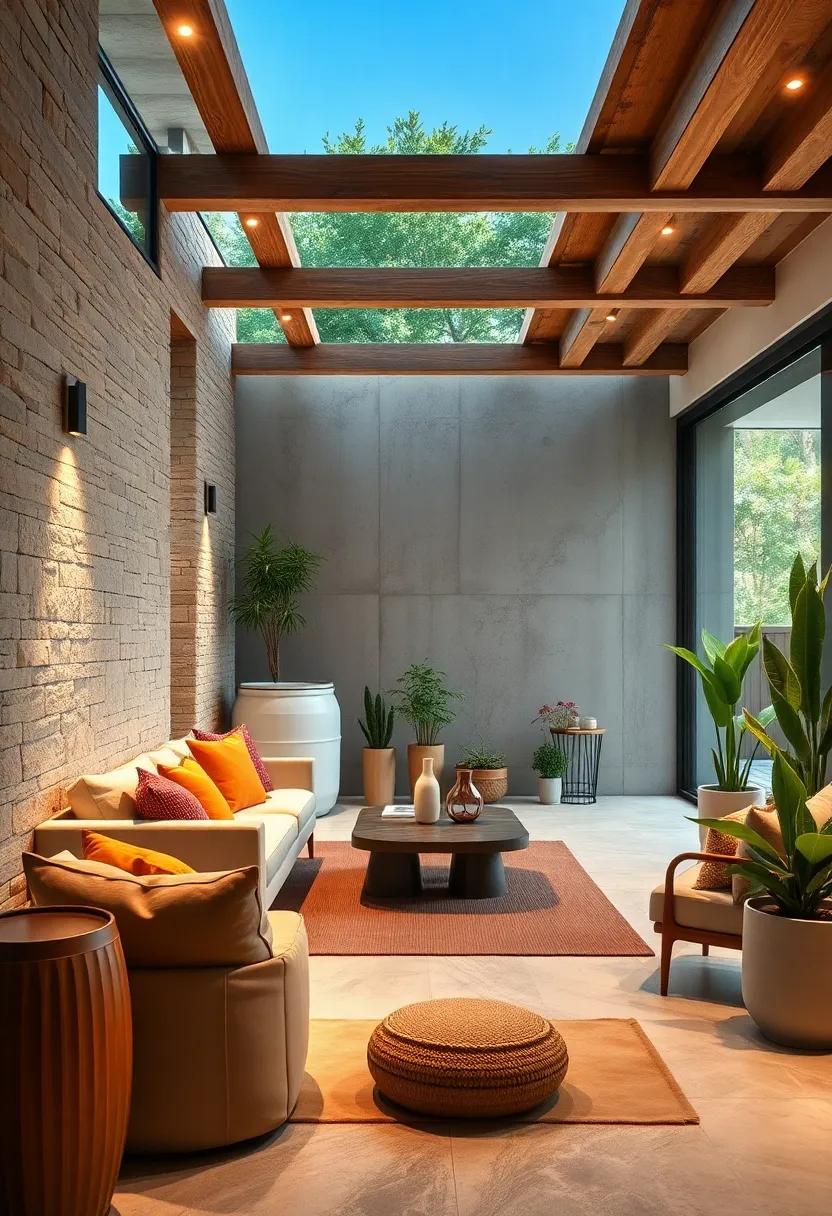
Rainwater Harvesting for Urban Spaces: Adapting to City Living
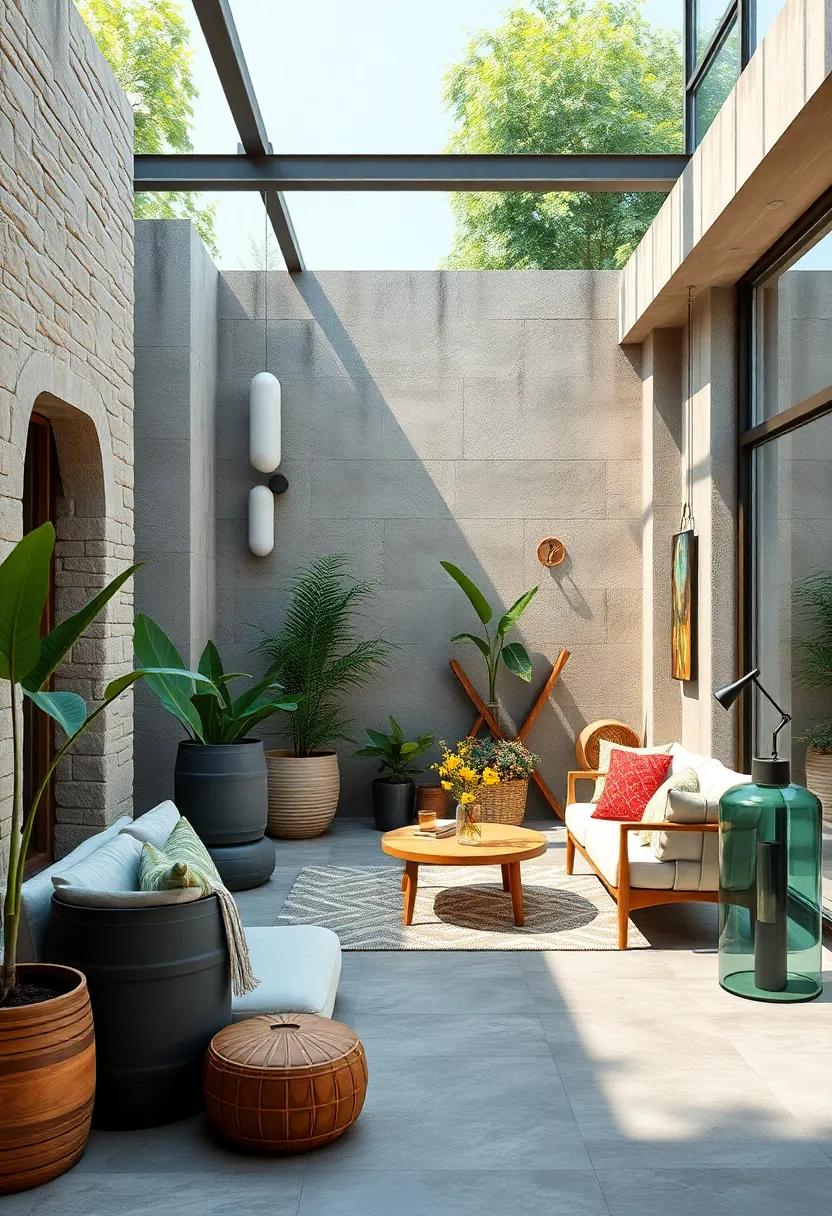
Urban spaces frequently enough wrestle with an oversaturation of concrete and minimal green areas,making it essential to adopt innovative solutions like rainwater harvesting.By collecting and utilizing rainwater, city dwellers can create sustainable outdoor spaces that not only minimize dependence on municipal water supply but also enhance their urban ecosystem. consider implementing green roofs, which can be designed to collect rainwater, reduce stormwater runoff, and promote biodiversity through flowering plants that attract pollinators. Similarly, permeable pavements allow rainwater to filter through and recharge groundwater, all while providing utility for your outdoor areas.
Incorporating rain barrels in creative ways can transform small urban gardens and balconies into thriving oases. Here are a few ideas to get started:
- Vertical Gardens: Attach rain barrels to a wall to use space efficiently while cultivating herbs and flowers vertically.
- Decorative Fountains: Use rainwater in a small fountain feature to enhance tranquility and attract wildlife.
- Edible Landscaping: Capture rainwater to nourish vegetable patches, creating vibrant, sustainable food sources.
- Community rain Gardens: Collaborate with neighbors to design collective rain gardens that purify runoff while providing habitats for urban wildlife.
Utilizing rainwater in urban settings can significantly contribute to greener communities. Here’s how some cities are leading the charge:
| City | Rainwater Harvesting Initiative | Impact |
|---|---|---|
| Seattle | RainWise Program | Reduces stormwater pollution through incentives for rain gardens and barrels. |
| Los Angeles | Green City Initiative | Improves water conservation and urban greening with community workshops. |
| toronto | Toronto Green Standard | Encourages sustainable building practices that include rainwater systems. |
Landscaping with Water: Designing Gardens that Utilise Rainwater
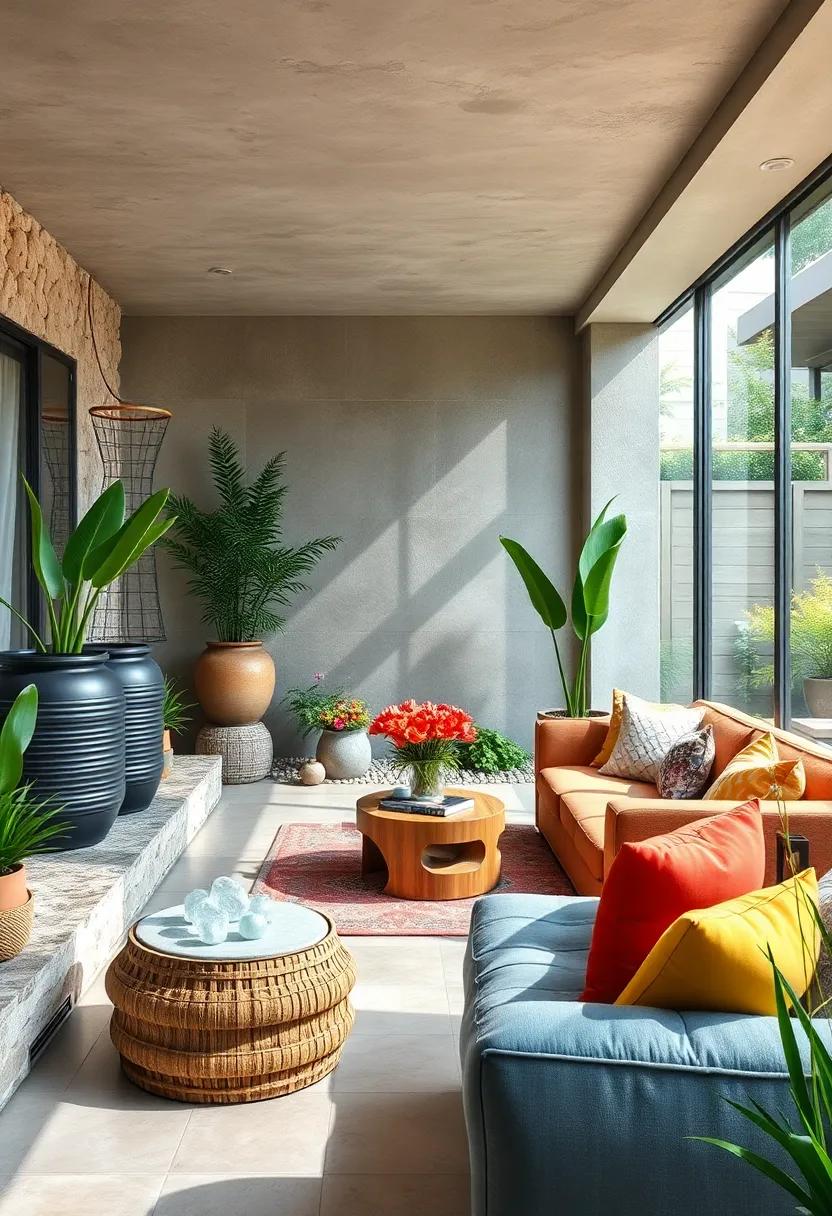
Integrating rainwater management into your garden design not only conserves water but also creates visually stunning features that enhance your outdoor space. Consider incorporating reflective ponds that capture rainwater,surrounded by lush plants that thrive in moisture-rich environments. These tranquil water features can serve as a focal point, offering a sanctuary for wildlife while concurrently improving the landscape’s ecology. Additionally, rain gardens can be designed to filter rainwater runoff, allowing native plants to flourish while preventing erosion and flooding.Use layered plantings of grasses, ferns, and perennials to create a vibrant ecosystem that changes with the seasons.
To maximize the use of rainwater, think creatively about the layout and placement of collection systems. Such as, install permeable paving in your pathways to allow rain to seep into the ground rather than running off into drains. You could also use swales to channel rainwater to designated areas, promoting healthy drainage and plant growth.pair these designs with aesthetic rain barrels, which can be painted or adorned to reflect your garden’s style, seamlessly blending practicality with beauty. The combination of functional elements like soakaway systems and decorative features ensures that your garden becomes an oasis that breathes life and sustainability.
Creating Outdoor Living Spaces: Incorporating Rain Barrels into Patios
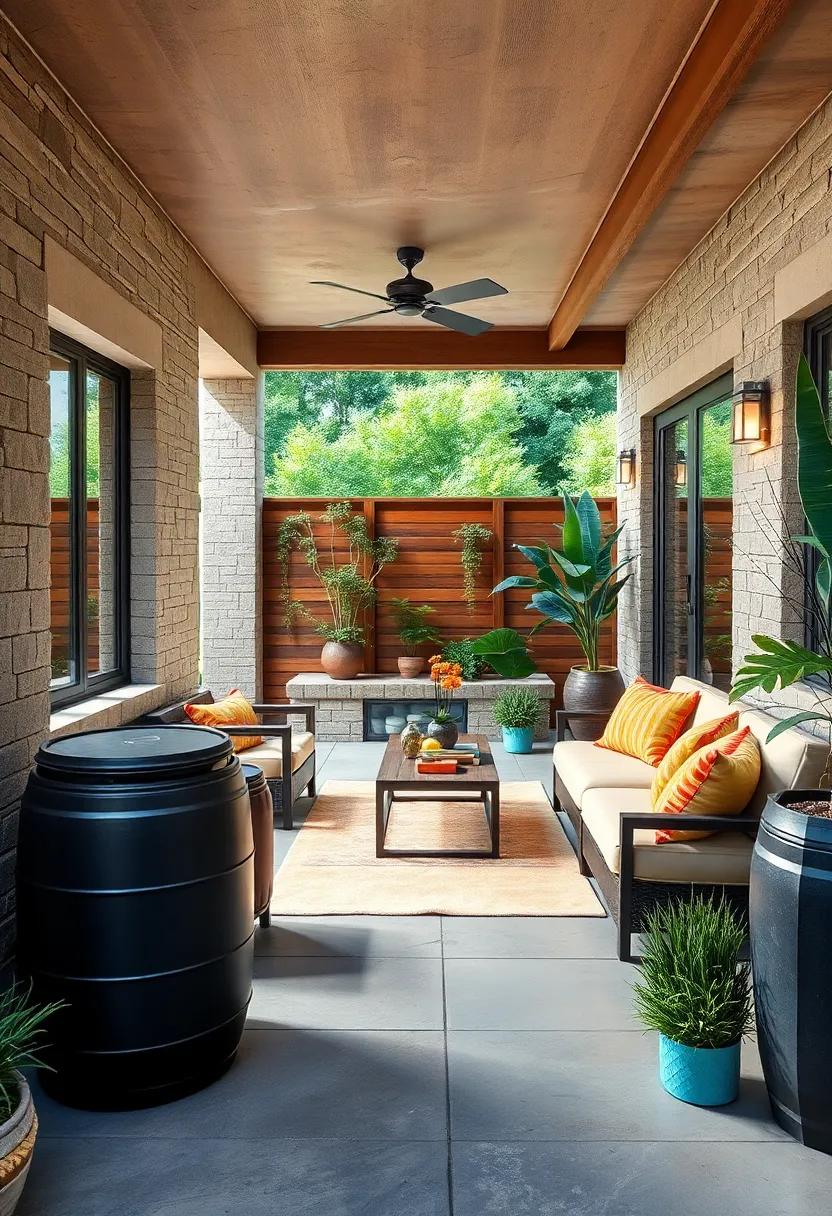
Transforming your patio into an eco-friendly paradise is easier than you might think! By incorporating rain barrels into your outdoor living spaces, you not only create functional beauty but also enhance your sustainable practices. Position your rain barrels strategically near downspouts to collect the maximum amount of rainwater, which can then be used for watering plants and gardens. Consider using aesthetically pleasing barrels that complement your patio decor, such as wooden-styled barrels or colorful ceramic options. Integrating these barrels with planting areas or flower beds allows for seamless blending into the landscape, ensuring they enhance rather than detract from the overall design.
For a cohesive and attractive setup, think about adding some clever accessories around your rain barrels. here are a few ideas to consider:
- Decorative trellises: Frame your rain barrel with a trellis and climbing plants to create an eye-catching focal point.
- rain chains: Replace traditional downspouts with beautiful rain chains that direct water into your barrel while offering a soothing sound during rainfall.
- Built-in benches: Design benches around your rain barrel for extra seating and to provide a tidy looking outdoor space.
| Barrel Style | Best Use | Visual Appeal |
|---|---|---|
| Wooden | Coastal/ Rustic Gardens | warm, Natural look |
| Ceramic | Modern/ contemporary Patios | Vibrant Colors and Patterns |
| Metal | Industrial Styled Spaces | Edgy and Unique |
Multifunctional Rain Barrels: Combining Storage, Sitting, and Planting
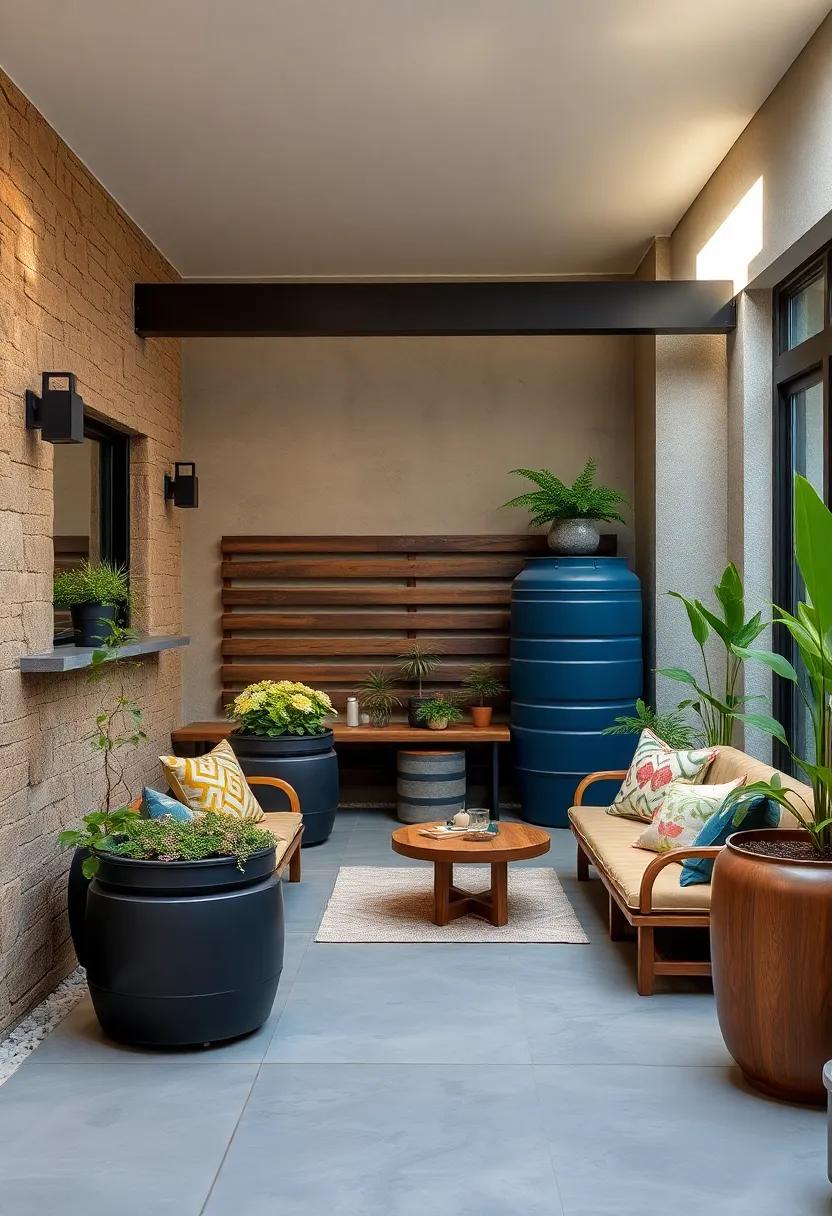
Multifunctional rain barrels offer innovative ways to utilize water collection for various outdoor needs, transforming your space into a hub of functionality and sustainability. These clever designs integrate water storage with other elements, such as seating or planters. imagine having a stylish rain barrel that not only collects rainwater but also doubles as a benches for outdoor gatherings. Customized cushions can be added for comfort, making it a perfect spot for friends and family to enjoy the fresh air while soaking in nature’s beauty.
Additionally, there are rain barrels designed to incorporate a plant container right on top, effectively allowing you to have a small garden without taking up any additional space. These sleek setups become a conversation starter while promoting a greener lifestyle by minimizing water waste. you can choose a variety of plants that thrive in the local climate,creating a beautiful,self-sustaining ecosystem that not only enhances your outdoor aesthetics but also attracts local wildlife. Take a look at our comparison table below to see some popular multifunctional rain barrel designs:
| Design Type | Functionality | Best Plants |
|---|---|---|
| Barrel Bench | Seating & Water Storage | Succulents, Herbs |
| Planter Top | Water Storage & Gardening | Flowers, Vegetables |
| Decorative Sphere | Art Piece & Water Collection | Ornamental Grasses |
Year-Round Utility: Using Rainwater for Seasonal Garden Needs
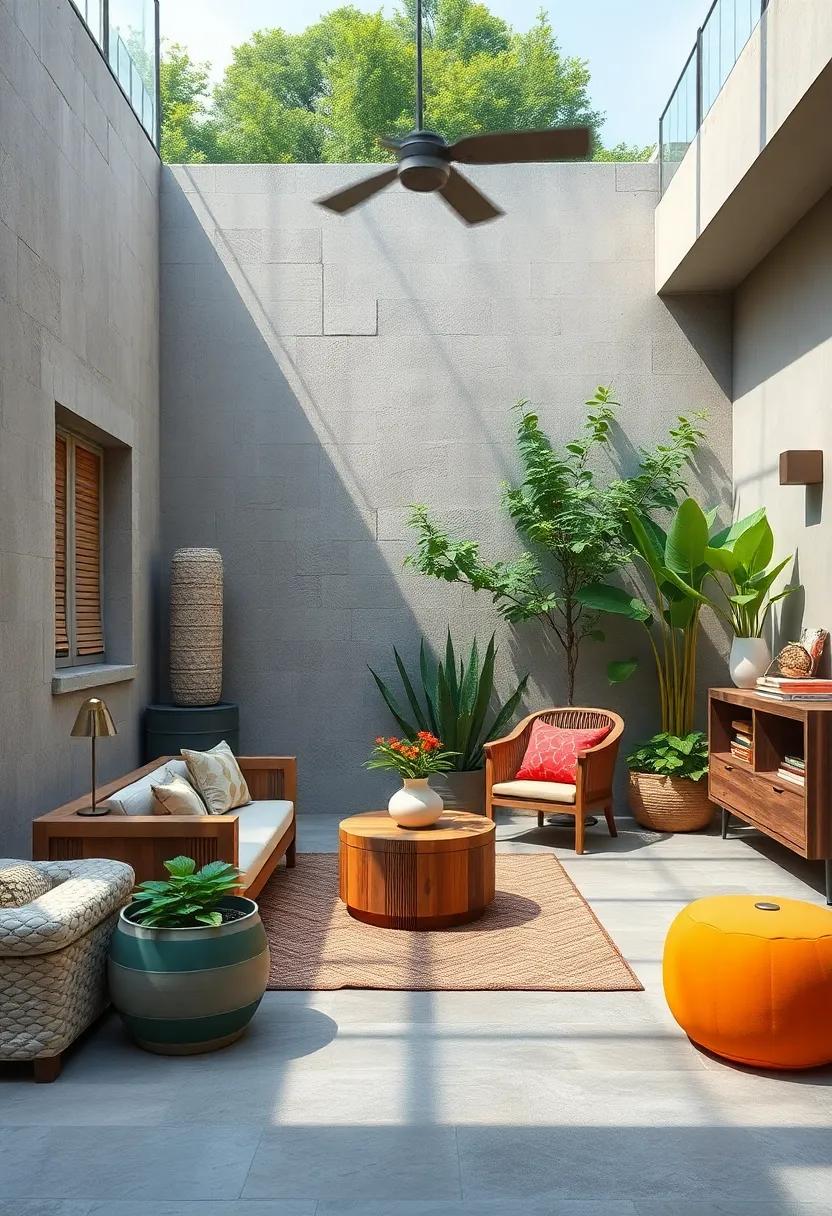
One of the most effective ways to maximize your garden’s health throughout the year is by utilizing rainwater collected in barrels during the rainy season. This natural resource provides a free and eco-friendly way to hydrate your plants, ensuring they flourish in even the driest months. By designing a sustainable irrigation system that taps into your rainwater supply, you can easily meet your garden’s watering needs irrespective of the season. Consider implementing techniques such as drip irrigation, which delivers water directly to the roots, minimizing waste and promoting more efficient absorption. The use of rainwater not only conserves precious drinking water but also keeps your plants thriving as they adapt to varying weather conditions.
To get the most out of your rainwater,think about integrating features that allow for easy usage across different garden types. Here are a few ideas to create a dynamic garden ecosystem:
- Watering Cans: Fill a collection of watering cans with rainwater for easy, targeted watering of potted plants.
- soaker Hoses: Connect soaker hoses to your rain barrels for efficient, low-pressure irrigation.
- Garden Ponds: Use rainwater to create a small pond that can support wildlife while serving as a secondary water source for other plants.
| Season | Garden Need | Rainwater Action |
|---|---|---|
| Spring | seedling Hydration | Water nursery trays and raised beds with collected rainwater. |
| Summer | Regular irrigation | Utilize drip systems connected to rain barrels. |
| Fall | Preparing Soil | Moisten the soil with rainwater before planting cover crops. |
| Winter | Plant Protection | Water dormant plants occasionally to prevent freeze damage. |
the Economic Benefits: Reducing Water Bills with Rain Barrels
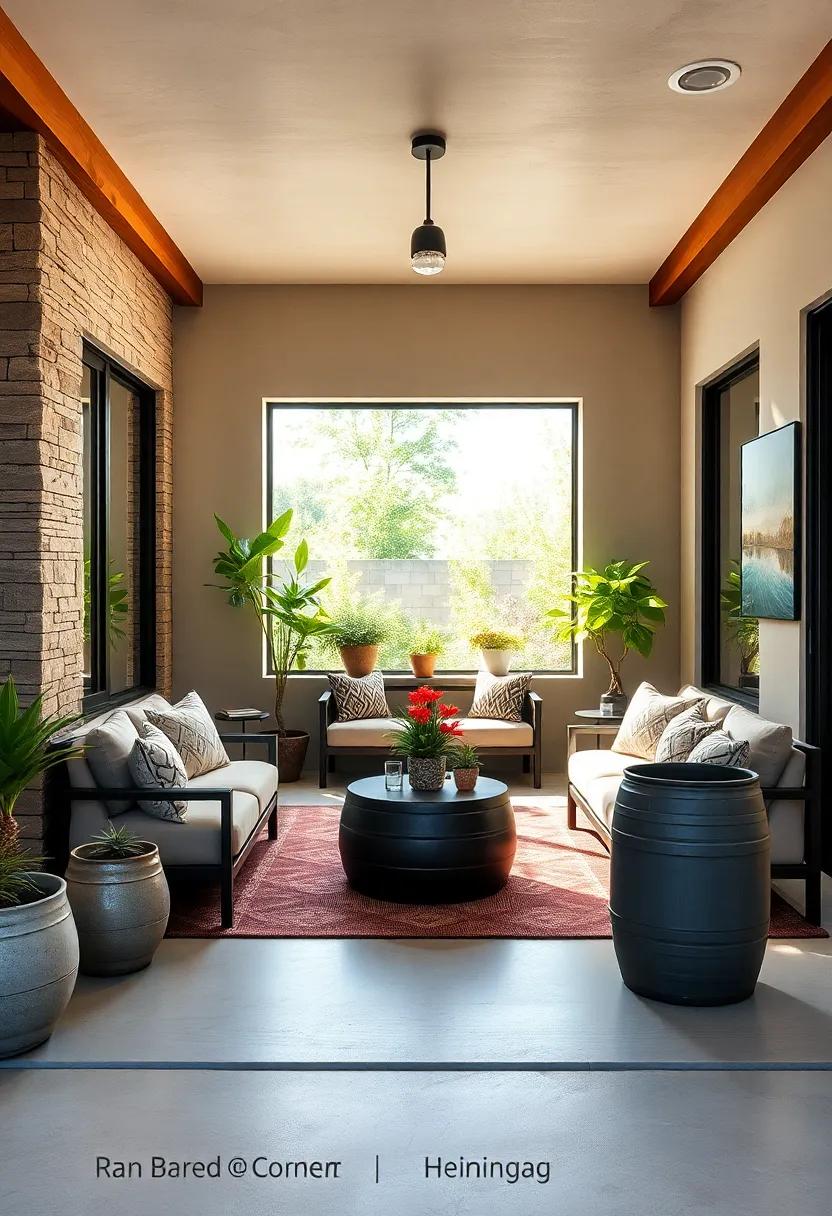
Implementing rain barrels into your outdoor space offers not just an eco-friendly solution, but it can significantly impact your financial bottom line by reducing water bills. By collecting rainwater, homeowners can use this natural resource for various outdoor needs, effectively lowering reliance on municipal water supply. The savings on water bills can be considerable, especially in regions with fluctuating water prices or during drought seasons when water usage restrictions may apply. Here are some ways rain barrels contribute to your budget:
- lower Water Costs: Utilize stored rainwater for irrigation,eliminating the need for tap water.
- Reduced Treatment Fees: By drawing from your rain barrel, you lessen the amount of treated water you use, leading to fewer treatment charges.
- Incentives: Some local governments offer tax credits or rebates for water-saving devices like rain barrels, which can further enhance your savings.
Additionally, the economic benefits extend beyond just cheaper bills; they can also contribute to an increase in property value. Homebuyers increasingly favor properties with sustainable features, including water-saving installations. A rain barrel not only showcases a commitment to conservation but also appeals to buyers looking for cost-effective living solutions. Here’s a simple overview of how investing in a rain barrel can yield financial benefits over time:
| Benefit | Estimated Savings per Year |
|---|---|
| Lower water bills | Up to $200 |
| Sewer assessment reduction | Up to $100 |
| Potential rebates/incentives | Varies by locality |
encouraging Local Flora: Preserving native Plants Using Sustainable Techniques
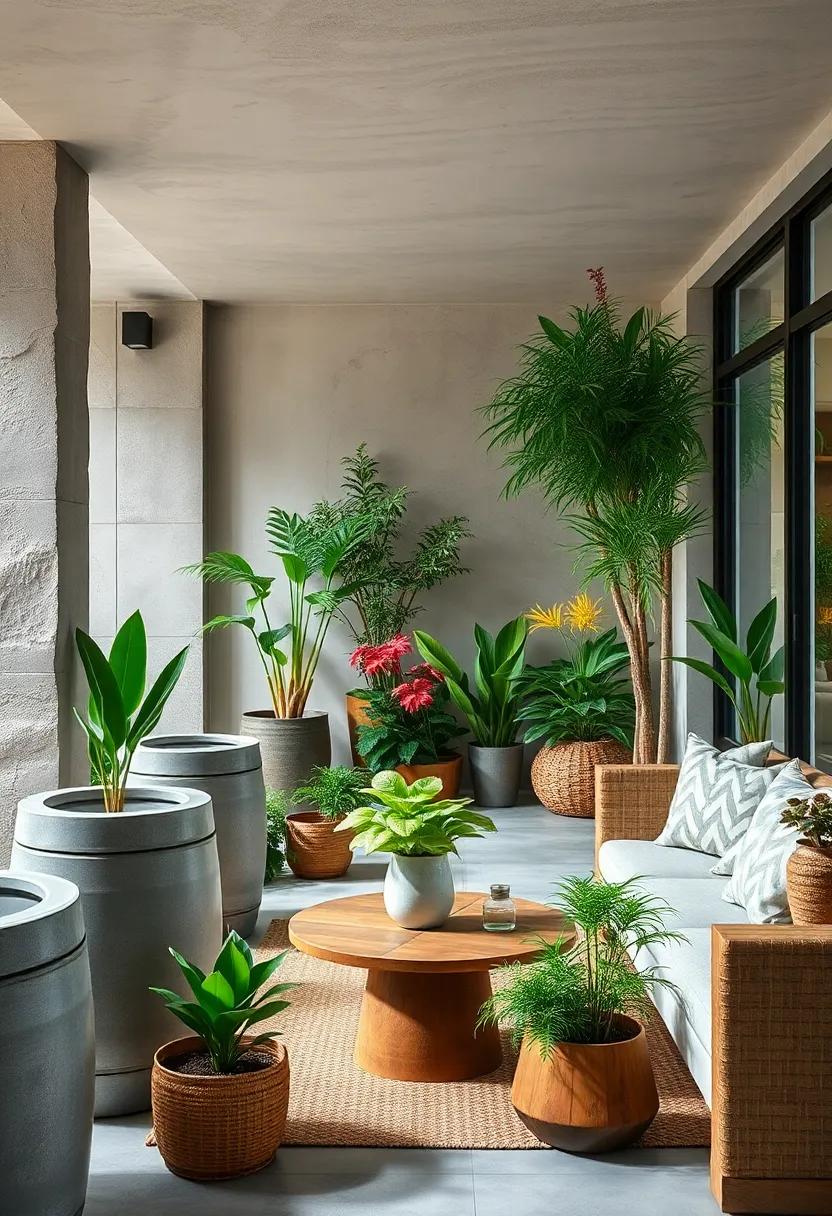
One of the best ways to maintain biodiversity and strengthen local ecosystems is by nurturing native plants in your garden. By incorporating sustainable techniques, you can not only enhance the beauty of your outdoor space but also support local wildlife. Here are a few methods to encourage local flora:
- Create a Native Plant Garden: Select plants that are indigenous to your area to establish a low-maintenance garden that thrives in your local climate.
- Utilize Rain Barrels: Use collected rainwater to irrigate your native plants, which frequently enough require less water than non-native species.
- Practice Companion Planting: Pair native plants with compatible neighbors to enhance growth, deter pests, and attract pollinators.
- Implement Mulching: use organic mulch to retain soil moisture and reduce competition from invasive species.
- Host Seed Swaps: Share and obtain seeds from other local gardeners to increase the variety of native plants in your garden.
In addition to these techniques, consider participating in community efforts focused on preserving native flora.Collaborating with local environmental groups can provide opportunities to learn more about regional plants and their importance. Here’s a simple table illustrating the benefits of native plants:
| Benefit | Description |
|---|---|
| Supports Wildlife | natives provide food and habitat for local birds, insects, and other wildlife. |
| Low Maintenance | Adapted to local soil and climate, reducing the need for fertilizers and pesticides. |
| Water Conservation | Typically need less water, making them ideal for sustainable gardening practices. |
| Preserves Local Culture | Maintains the botanical heritage and promotes the cultural significance of regional flora. |
Inspiring Stories: real-Life Examples of Successful Rain Barrel Projects
In the picturesque town of Asheville, North Carolina, a community initiative brought together local residents to embrace conservation through a collective rain barrel project. They transformed the rooftops of several homes into sustainable water collection systems, showcasing their handiwork during local farmer’s markets.By customizing their barrels with vibrant paint designs reflecting the local landscape, participants not only beautified their gardens but also contributed to water conservation. The project resulted in over 100 rain barrels being distributed and installed, leading to a remarkable reduction in water bills and increased awareness of sustainable practices within the community.
In an innovative endeavor, a group of urban gardeners in New York City partnered with schools to implement rain barrel programs as part of their science curriculum. Students learned about the water cycle and the importance of sustainability while actively participating in the rainwater collection process. Each classroom designed and constructed their own rain barrels, which were then installed at their school gardens, utilizing the harvested rainwater to maintain flowers and vegetables. This hands-on experience not only fostered a greater appreciation for nature but also resulted in improved school garden productivity by an impressive 40%, illustrating the potential for education and environmental stewardship to go hand in hand.
Insights and Conclusions
As we wrap up our exploration of the 25 inspiring ways to create sustainable outdoor spaces with rain barrels, it’s clear that small changes can lead to important impacts. Each technique highlighted serves not only to beautify your outdoor environment but also to promote a healthier ecosystem, conserve water, and nurture a deeper connection with nature.
With the knowledge and ideas shared, we hope you feel empowered to embark on your own sustainable journey. the incorporation of rain barrels into your gardening practices is more than an environmental choice; it’s a step towards a brighter, greener future for you and the generations to come.
So grab your tools, unleash your creativity, and start transforming your outdoor space into an oasis of sustainability. Remember, every drop counts, and your efforts – no matter how small – can create ripples of positive change.Happy gardening!
 Decorationg Interior Design
Decorationg Interior Design 